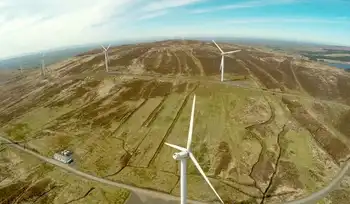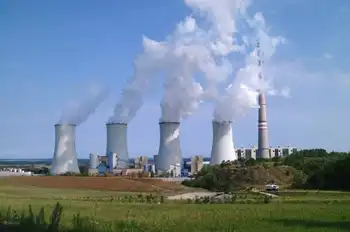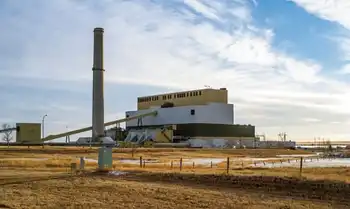The OPA's nuclear vision
That's the message Ontario's power authority was eager to get across while submitting the final version of an electricity-system plan to the Ontario Energy Board for approval.
Under the plan, largely unchanged from a draft released in December, the government will spend $60 billion between now and 2027, with the lion's share on nuclear-power projects, to assure reliable electricity supply in a province moving to phase out coal power by 2014.
Environmentalists and alternative energy experts were quick to criticize the document for its "big build" bias, arguing the plan relies too heavily on nuclear, underestimates the reach of conservation and fails to embrace the full potential that wind, solar and other "green" energy technologies can economically offer.
"This is really a great plan for 1977, but not for 2007," said Keith Stewart, an energy expert with environmental group WWF-Canada.
"In 10 years, we'll be laughing at how conservative our projections are today. We should be planning for the future, not planning to fall behind the rest of the world in terms of being a centre for these new technologies."
But the Association of Power Producers of Ontario applauded the plan as a "major milestone" in a province that has not produced an electricity-system planning document in 15 years.
About $27 billion will be earmarked to refurbish old nuclear plants and build new ones, with the goal of having nuclear maintain nearly half of all power production on the grid.
Toward this goal, the power authority announced it had extended its refurbishment agreement on Bruce Power. The nuclear operator will now spend $1 billion more to completely refurbish its Unit 4 reactor, bringing the project's total cost to $5.25 billion and extending the life of the reactor 20 years, to 2037.
Another $10 billion will be used to reduce demand on the electricity system through conservation, energy efficiency and other methods.
Renewable electricity will contribute 30 per cent to overall supply through a $15 billion investment in mostly wind and hydroelectric projects. New transmission will cost $4 billion, much of it devoted to connecting new hydro dams in the north, while $3 billion will pay for four new gas-fired plants to assure reliable supply to Toronto and surrounding areas.
The likely impact to consumers by 2025: a 15 per cent to 20 per cent cost increase for every kilowatt-hour consumed, although, if conservation programs work, the average household by that time would use up to a quarter less electricity, so the overall bill would fall.
Officials at the Ontario Power Authority, or OPA, the independent body charged with planning Ontario's electricity, emphasized that the plan, more than two years in the making, designed and expected to change as new technologies, opportunities and challenges emerge.
"This is a road map," said Jan Carr, chief executive officer of the power authority. "It is not the journey."
Energy Minister Dwight Duncan said in an interview the proposal is a "clear map" and "balanced plan."
"I think it's a very important planning document," said Duncan. "We've built in a formal, three-year review so people in Ontario can see what we've done right, and what's been done wrong."
Opposition parties were quick to pounce. Progressive Conservative Leader John Tory accused the government of moving too slowly to develop nuclear power.
"Nor do I believe they are making an investment of the magnitude that's necessary to secure supply of baseload power."
The New Democrats, on the other hand, warned that the plan puts future renewable projects and conservation efforts at risk.
"This remains a go nuclear, go big electricity strategy," said NDP leader Howard Hampton. Also, talk of an east-west grid to carry clean hydroelectricity from northern Manitoba and Labrador is suddenly missing from the plan, he said.
Duncan said the exclusion was intentional.
"There are huge variables that are out of the control of the province of Ontario, so we couldn't in good conscience include megawatts from those sources." He said the plan can be adjusted to reflect any such projects. "Any megawatts we get from them will be a bonus."
But environmentalists such as Stewart said a three-year review, while welcome, can help only so much when decisions are being made today to proceed with large nuclear and transmission projects that require long lead times, and which take resources away from conservation and renewables.
"If you're already building the nuclear plants to meet that need, then the conservation programs get cancelled," he said. "We should be looking at this as an opportunity to modernize our energy system, not just to hand out big construction contracts."
Some small changes were made in the final plan from December's draft.
For example, the power authority slightly reduced the projected growth in electricity demand over the next 20 years, citing improved operational efficiencies within major industries.
The authority reduced the amount of wind power being pursued by the province by about 800 megawatts, but replaced this by increasing the target for hydroelectric power in the north.
"Hydro is cheaper than wind in most circumstances... it lasts longer and is more dispatchable," said Amir Shalaby, vice-president of system planning with the power authority.
The final plan also eliminates consideration of alternative approaches, including electricity generation through the pumped storage of water, gasification of coal and municipal waste and the use of fuel cells.
The Canadian Solar Industries Association complained that the plan also lowballs the potential of solar technologies.
Charles Keizer, who helps lead the energy practice at law firm Ogilvy Renault, said the plan still needs the approval of the Ontario Energy Board, a process that could take a year.
"The practical reality is that you can't have everything in the plan," he said, adding that the real challenge will be to streamline regulatory hurdles so that the contents of the plan can be implemented with little delay.
"Problems can arise in terms of timing. The plan itself may be coherent and cohesive. It's the variables now that really need to be managed."
Related News

Price Spikes in Ireland Fuel Concerns Over Dispatachable Power Shortages in Europe
DUBLIN - Irish grid-balancing prices soared to €3,774 ($4,284) per megawatt-hour last month amid growing concerns over dispatchable power capacity across Europe.
The price spike, triggered by an alert regarding generation losses, came only four months after Ireland and Northern Ireland launched an Integrated Single Electricity Market (ISEM) designed to make trading more competitive and improve power distribution across the island.
Evie Doherty, senior consultant for Ireland at Cornwall Insight, a U.K.-based energy consultancy, said significant price volatility was to be expected while ISEM is still settling down.
When the U.K. introduced a single market for Great Britain, called British Electricity Trading and…





